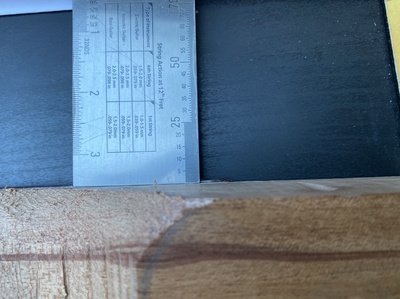I used little picture hanging nails
I use these too.
Also a few grains of salt can help minimizing the slipping, that, together with slowly increasing pressure on your clamps, while keep correcting eventual slippage should help.
I find (and read) that key to success in guitar building is patience and doing things slowly. There is enough time to do it properly. Everytime I screw up, its because I was not doing it mindful or to quickly because I think I need to hurry up.
Judging from your photos @cheesewhisk it doesn’t look like squeeze out for days. But It does sound like you figured the problem out by missing the nail hole... sorry about that.
How about a close up photo of the fretboard alignment?
Practice on scrap...
I feel slightly cheated if I have fewer than 24 frets, 21 frets on a modern guitar should be a hanging offence in my opinion.
I agree with you @jonhodgson, well except for that part about the hanging, jeez... a tad extreme don’t you think? 😄
But I also like 22 frets, it depends on the guitar. However 21 is definitely not to my liking.
Are you also familiar with the Hamer Virtuoso?
Practice on scrap...
Practice on scrap...
. a tad extreme don’t you think
You say extreme, I say firm, but fair.
22 Is forgivable on the basis that some people just want the tone of the pickup in that 24th fret position, it is after all the traditional neck pickup tone we've heard on many recordings (the reason Satriani's 24 fret model has a single coil sized humbucker was expressly so they could get it as far up the string as possible).
But 21 fret guitars always have room for an extra fret (at least strats and teles do, and they're the ones most likely to be 21 frets). The only reason is to make it look "vintage"... well it's not vintage, so why make it less useful?
When Dave Kilminster (actually a former guitar teacher of mine) had his audition with Roger Waters who he's now played with for many years now (as Dave Gilmour's stunt double as he puts it) he got half way through playing "Money" when he remembered that it's a 22 fret solo and he was playing a 21 fret guitar!
They seem to be popular though, in the design guide for the Fender Custom Shop all but one of each of the strat and tele base models (The Elite in both cases) has a 21 fret neck.
Rubbing the two surfaces together after the glue has been applied but before clamping helps to mate the surfaces together and prevent slipping after clamping. It’s known as a rubbed joint as opposed to a rolled joint which is something completely different and may cause law enforcement to knock on your door.
When dry clamping I make pencil marks on the neck to help align the fretboard on the neck. This aligns the holes for locating pins and sets everything up for clamping.
Some people call me a tool, others are less complimentary. Tools being useful things.
Do you work in imperial measurements?
I was reading something the other day about Gibson factory setting for string height. Being American, the dimensions are in imperial, which I haven't got a problem with. The things that upset me are sizes like 1.5/64" or 4/32". If they insist on using imperial, the least they can do is use it properly.
I was reading something the other day about Gibson factory setting for string height. Being American, the dimensions are in imperial, which I haven't got a problem with. The things that upset me are sizes like 1.5/64" or 4/32". If they insist on using imperial, the least they can do is use it properly.
Whilst I concur with your rationale for being upset - I'd also suggest that Gibson's QC is renowned for never getting anything done to that degree of accuracy.
1.5/64" ... as if!!!
Online guitar making courses – guitarmaking.co.uk
I missed out on the whole Imperial thing, I was brought up on metric thank goodness.
I was very lucky that in primary school it was all imperial, in high school it was all metric. On my first day in tech drawing at high school, we were told that the whole world would have adopted metric by the time we left school, forget imperial. I can quite happily work in both and flip between them.
I happily converted to the metric system after moving to Germany, it’s soooo much simpler and more accurate imo.
I still measure a few things in imperial like fretwire, action and scale length but pretty much everything else I would use metric.
Practice on scrap...






